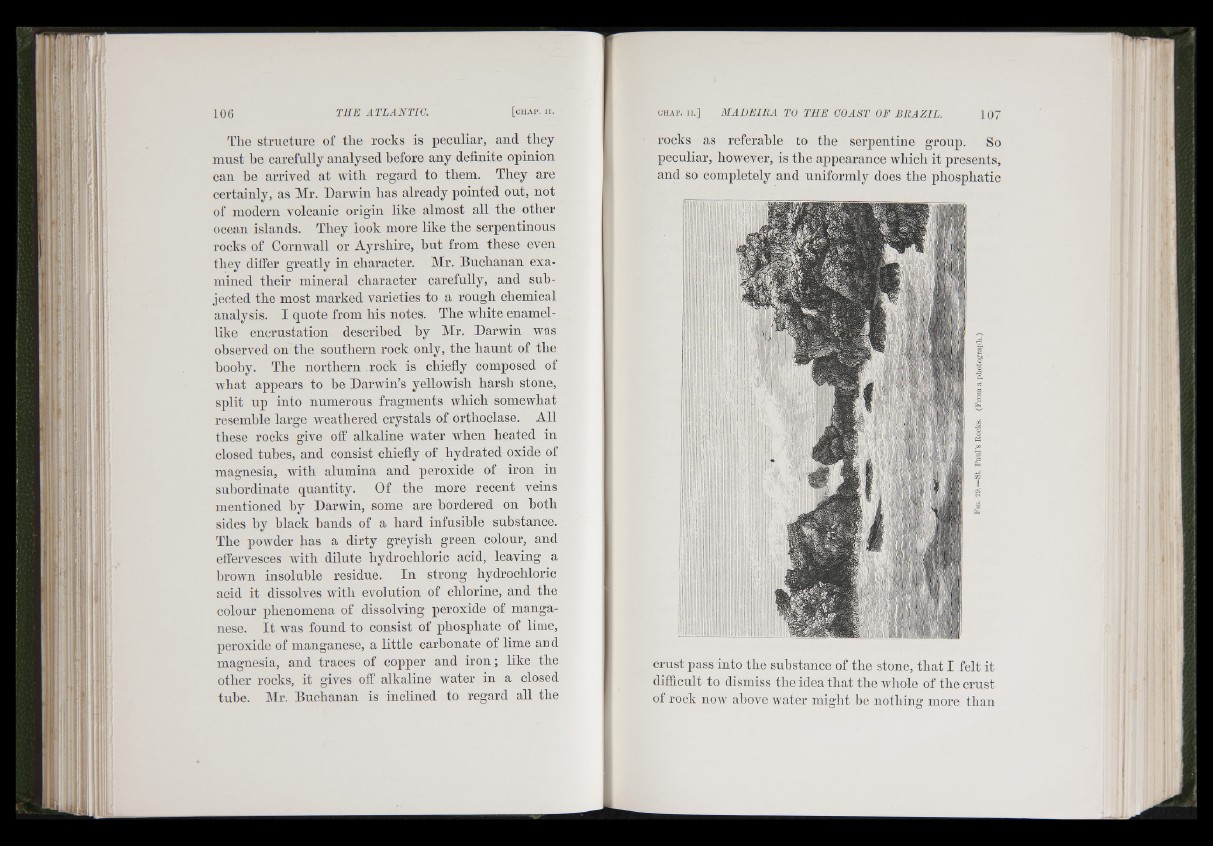
The structure of the rocks is peculiar, and they
must he carefully analysed before any definite opinion
can he arrived at with regard to them. They are
certainly, as Mr. Darwin has already pointed out, not
of modern volcanic origin like almost all the other
ocean islands. They look more like the serpentinous
rocks of CoriiAvall or Ayrshire, hut from these even
they differ greatly in character. Mr. Buchanan examined
their mineral character carefully, and subjected
the most marked varieties to a rough chemical
analysis. I quote from his notes. The white enamellike
encrustation described hy Mr. Darwin was
observed on the southern rock only, the haunt of the
hoohy. The northern rock is chiefly composed of
Avhat appears to be Darwin’s yellowish harsh stone,
split np into numerous fragments which somewhat
resemble large AA'eathered crystals of orthoclase. All
these rocks give off alkaline water when heated in
closed tubes, and consist chiefly of hydrated oxide of
magnesia, Avith alumina and peroxide of iron in
snhordinate quantity. Of the more recent veins
mentioned hy Darwin, some are bordered on both
sides by hlack bands of a hard infusible substance.
The powder has a dirty greyish green colour, and
effervesces Avith dilute hydrochloric acid, leaving a
broAvn insoluble residue. In strong hydrochloric
acid it dissolves Avith evolution of chlorine, and the
colour phenomena of dissolving peroxide of manganese.
It Avas found to consist of phosphate of lime,
peroxide of manganese, a little carbonate of lime aa d
magnesia, and traces of copper and iron; like the
other rocks, it gives off alkaline Avater in a closed
tube. Mr. Buchanan is inclined to regard all the
rocks as referable to the serpentine group. So
peculiar, however, is the appearance Avhich it presents,
and so completely and uniformly does the phospliatic
Ph
crust pass into the substance of the stone, that I felt it
difficult to dismiss the idea that the Avliole of the crust
ol rock noAV above water might be notliing more than